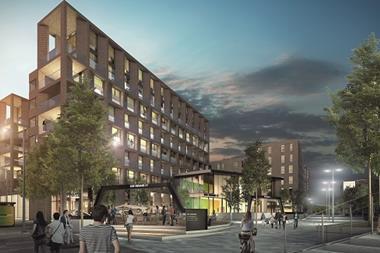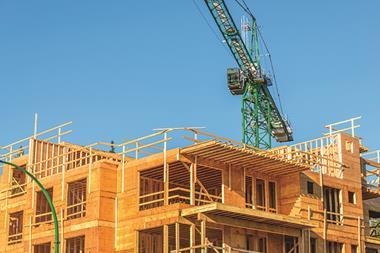There is no doubt that the private rented sector (PRS), now more popularly called build-to-rent (BTR), is a rising force in residential development.

We have moved away from the early, opportunistic PRS investments in unsold, private, for-sale units to a more professional and bespoke product. More sophisticated players are entering the market with clear business plans and substantial sums to invest.
The government has changed direction and is also now supporting BTR, at least in words if not yet in deeds. A major influx of capital that would otherwise not be in the resi sector and a professional asset management approach are exactly what is needed if this country is going to get even close to delivering the 300,000 new homes per year that are needed.
However, many investors are now realising that the new BTR moniker is already outdated: develop-to-rent would be much more accurate. Being a long-term investor in a politically supported sector doesn’t exempt you from all the usual challenges facing developers: planning, transport, site assembly, design reviews, construction delays and committees.
Not every BTR investor would appear to understand the risk that they are taking when they acquire a site for their new asset; some will undoubtedly get their fingers burnt.
But perhaps the most interesting challenge lies ahead. Too much of the commentary around rental has been coloured by the lazy assumption that BTR is aimed purely at 20-somethings who can’t afford to buy a home.
Undoubtedly, BTR schemes will help house the millennial workforce in major cities, but the focus of the product needs to be much broader. These are multi-decade investments that need to have an eye on the needs of tomorrow as well as today.
Rising life expectancy
The average life expectancy of a child born today is over 100 and the concept of retirement is one of the last dying embers of the Industrial Revolution.
Working beyond our 80th birthdays will become the norm much more quickly than we think. Post-child families are increasingly moving back to urban areas and live in homes that better suit their circumstances. Such homes will often be rented to allow for a more flexible and sometimes nomadic lifestyle.

A sense of community is often the biggest challenge in built-up urban areas and the sharing economy provides a partial solution. Co-living is disrupting our traditional understanding of rooms, spaces and functions in the same way co-working disrupted office design.
We will need to deliver places aligned with how people want to live, work, socialise and enjoy their environment. We need to ensure BTR is grounded in flexibility, enabling genuine opportunities to blur living and working. We see an opportunity to remove the silos we have put between use classes and create spaces that enable fluidity between work, live and play.
As always with development, the ultimate determinant of the success of an investment, hiding behind the short-term planning and policy bluster, is the quality and relevance of the design to the end customer. BTR cannot afford to ignore many of its future customers.
We continue to treat our scarcest resource (land) with disdain, designing resi and commercial buildings that are typically vacant for two thirds of the week and insisting on separate servicing and amenity. This is both undesirable and unsustainable. The rise of the develop-to-rent sector should allow us to address all of the above points to create a new, more efficient product that is as relevant in 2040 as it is in 2020.






























No comments yet